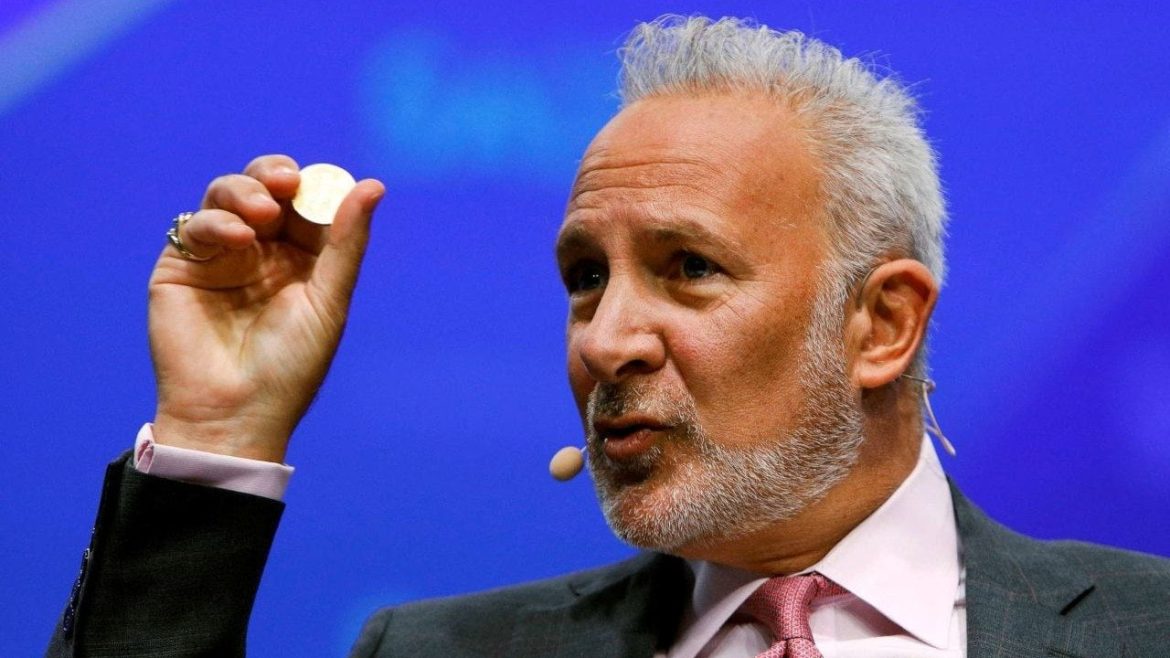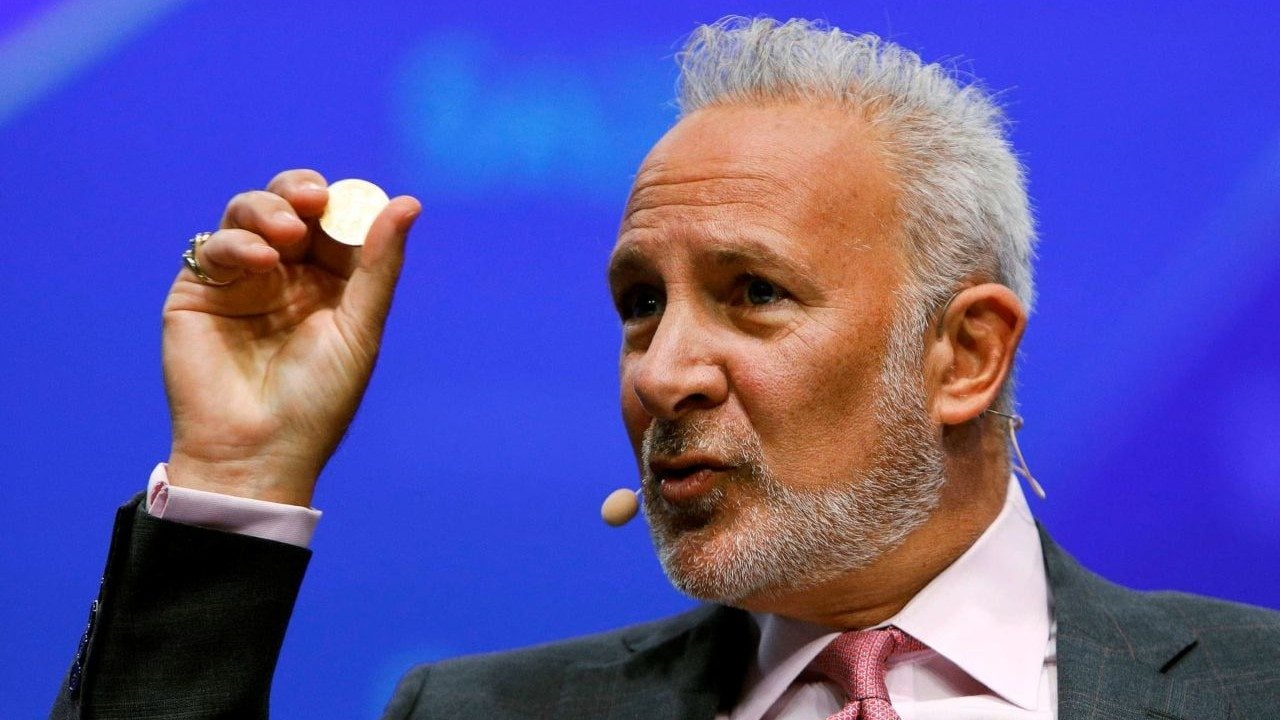The Nuanced Debate: Evaluating Peter Schiff’s Advice to Swap ETH for BTC
Introduction: A Skeptic’s Unexpected Advice
Peter Schiff, a prominent economist and long-standing cryptocurrency critic, has recently made waves by advising investors to sell their Ethereum (ETH) holdings and purchase Bitcoin (BTC) instead. This recommendation, coming at a time when Ethereum is experiencing a significant price rally, has sparked intense debate within the crypto community. Schiff’s consistent skepticism toward digital assets makes his endorsement of Bitcoin over Ethereum particularly noteworthy. To fully grasp the implications of this advice, it’s essential to dissect the rationale behind Schiff’s perspective, analyze the current market dynamics, and explore the fundamental differences between Bitcoin and Ethereum.
Schiff’s Perspective: A Flight to Perceived Safety
Schiff’s endorsement of Bitcoin over Ethereum, despite his general skepticism toward cryptocurrencies, appears to be rooted in his perception of Bitcoin as a more established and secure store of value. His argument seems to hinge on several key points:
Bitcoin as Digital Gold
Schiff’s affinity for gold likely influences his view of Bitcoin. He may see Bitcoin as the closest digital equivalent to gold, primarily functioning as a store of value with a limited supply of 21 million coins. This scarcity is a crucial element in Bitcoin’s value proposition, aligning with gold’s traditional role as a hedge against inflation and economic uncertainty. Schiff’s argument suggests that Bitcoin’s simplicity and established network effect make it a more reliable investment compared to Ethereum’s more complex and evolving ecosystem.
Ethereum’s Competition and Scalability Concerns
While Ethereum has pioneered smart contracts and decentralized applications (dApps), it faces intense competition from other blockchain platforms. Solana, Cardano, and Polkadot, among others, are vying for market share in the DeFi and NFT spaces. Additionally, Ethereum has grappled with scalability issues, leading to high transaction fees and network congestion. While the Ethereum 2.0 upgrade aimed to address these problems, its implementation has been gradual, and concerns remain. Schiff’s argument highlights these factors, suggesting that Ethereum’s future is less certain than Bitcoin’s, making it a riskier investment in the current market environment.
Ethereum’s Evolving Landscape
Ethereum’s move to Proof-of-Stake (PoS) represents a radical change to its core tenets, which may increase centralization and regulatory risk. Schiff’s skepticism toward Ethereum’s evolving landscape is not unfounded. The shift to PoS, while aimed at improving scalability and energy efficiency, has raised concerns about the potential centralization of the network. This transition, along with the ongoing competition and scalability challenges, may contribute to Schiff’s preference for Bitcoin’s more straightforward and established narrative.
Market Context: ETH’s Rally and Institutional Interest
Schiff’s recommendation comes at a time when Ethereum has been experiencing a significant price increase, reaching a six-month high. This rally has been fueled by several factors, including:
Anticipation of Spot Ethereum ETFs
The potential approval of spot Ethereum ETFs in the United States has generated considerable excitement, similar to the impact of spot Bitcoin ETFs. These ETFs would provide institutional and retail investors with easier access to Ethereum, potentially driving demand and price appreciation. However, Schiff might view this rally with skepticism, considering it a temporary phenomenon driven by speculation rather than fundamental value. He may believe that the market is overestimating the likelihood of Ethereum ETF approval or the sustainability of its current growth rate.
Increased Institutional Adoption
Institutional interest in Ethereum has been growing, driven by its role in DeFi, NFTs, and other emerging blockchain applications. Institutional investors see Ethereum as a key infrastructure component of the decentralized web. This increased adoption may signal long-term confidence in Ethereum’s potential, contrasting with Schiff’s more cautious perspective.
Treasury Flows and Market Sentiment
Positive treasury flows and overall improved market sentiment have also contributed to Ethereum’s recent surge. These factors may indicate a broader market optimism that Schiff’s advice does not fully account for. The interplay between market sentiment, institutional adoption, and regulatory developments creates a complex landscape that investors must navigate carefully.
Bitcoin vs. Ethereum: A Tale of Two Cryptocurrencies
To fully assess Schiff’s recommendation, it’s essential to understand the fundamental differences between Bitcoin and Ethereum:
Primary Purpose
Bitcoin’s primary purpose is to serve as a store of value, often referred to as “digital gold.” Its limited supply and decentralized nature make it an attractive option for investors seeking a hedge against inflation and economic uncertainty. Ethereum, on the other hand, is designed as a platform for decentralized applications, enabling the creation of smart contracts, DeFi protocols, and NFTs.
Consensus Mechanism
Bitcoin operates on a Proof-of-Work (PoW) consensus mechanism, which requires miners to solve complex mathematical problems to validate transactions and secure the network. Ethereum has transitioned to a Proof-of-Stake (PoS) mechanism, where validators stake their ETH to validate transactions and secure the network. This shift aims to improve scalability and energy efficiency but has raised concerns about centralization.
Scalability
Bitcoin’s scalability is limited, with Layer-2 solutions such as the Lightning Network being developed to address these challenges. Ethereum has been undergoing upgrades to improve scalability, including the implementation of sharding and rollups. However, these upgrades are ongoing, and concerns about network congestion and high transaction fees persist.
Use Cases
Bitcoin’s use cases are primarily focused on store of value and payments. Ethereum’s use cases are more diverse, encompassing DeFi, NFTs, DAOs, and smart contracts. This versatility has driven significant innovation and adoption but also introduces complexity and potential risks.
Supply
Bitcoin has a fixed supply of 21 million coins, which aligns with its role as a store of value. Ethereum does not have a fixed supply, with its issuance rate and supply dynamics influenced by its PoS mechanism and other economic factors.
Potential Implications and Considerations
Schiff’s recommendation to swap ETH for BTC is not without merit, but it’s crucial to consider the potential implications and individual investment goals before acting on it:
Risk Tolerance
Investors with a lower risk tolerance might find Bitcoin’s stability and established narrative more appealing. Those who are more comfortable with risk and seek higher growth potential may prefer to hold Ethereum. Understanding one’s risk tolerance is essential in making informed investment decisions.
Investment Horizon
For long-term investors seeking a store of value, Bitcoin may be a suitable choice. For those who believe in the long-term potential of decentralized applications and are willing to weather potential volatility, Ethereum may be a better fit. Aligning investment decisions with one’s investment horizon is crucial for long-term success.
Diversification
It’s generally advisable to diversify investments across different asset classes, including cryptocurrencies. A balanced portfolio that includes both Bitcoin and Ethereum may be a prudent approach. Diversification can help mitigate risks and capture opportunities across different market segments.
Market Timing
Attempting to time the market by selling Ethereum at its peak and buying Bitcoin at its low is a risky strategy. Market conditions can change rapidly, and investors may miss out on potential gains. A disciplined investment approach, rather than market timing, is often more effective.
Due Diligence
Before making any investment decisions, it’s essential to conduct thorough research and consult with a qualified financial advisor. Understanding the risks and potential rewards associated with each cryptocurrency is crucial for making informed decisions.
The Contrarian’s Play?
Peter Schiff’s advice is certainly contrarian. As a known gold bug, his views are always taken with a grain of salt by the crypto community. However, his arguments regarding Bitcoin’s established role as “digital gold” and the potential competition and regulatory risks facing Ethereum do have some validity. Ultimately, the decision to follow Schiff’s recommendation depends on individual investment goals, risk tolerance, and belief in the long-term potential of each cryptocurrency. Investors should carefully consider all factors before making any decisions.
A Lasting Impression
Whether Peter Schiff’s advice proves prescient or not remains to be seen. Regardless, it serves as a valuable reminder of the importance of critical thinking, due diligence, and understanding the fundamental differences between various cryptocurrencies. In the ever-evolving world of digital assets, informed decision-making is paramount. By carefully evaluating the arguments, market dynamics, and individual investment goals, investors can navigate the complexities of the crypto market and make decisions that align with their long-term objectives.





